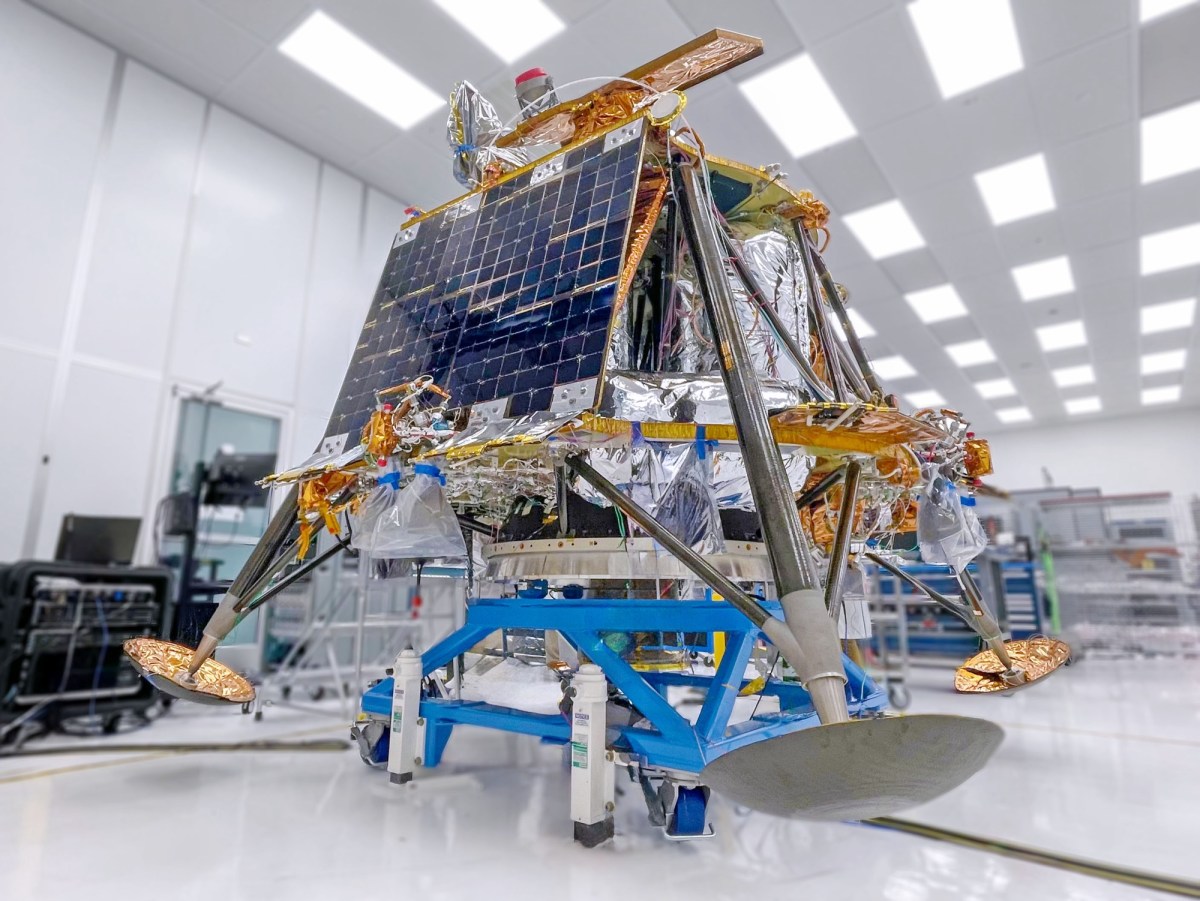WASHINGTON — Firefly Aerospace has completed its first lunar lander and shipped the spacecraft to the Jet Propulsion Laboratory for testing ahead of a launch late this year.
The company announced Aug. 26 that its Blue Ghost lander is now at JPL for vibration, acoustic, thermal vacuum and electromagnetic interference and compatibility tests, intended to confirm that the lander operates as expected in the space environment and can survive the rigors of launch.
“Firefly is proud to follow in the footsteps of the Surveyor landers that were tested in the same JPL facilities,” Peter Schumacher, interim chief executive of Firefly Aerospace, said in a statement, referring to the 1960s-era NASA robotic lunar landers. “The extensive environmental testing we’ll complete at JPL combined with the robust testing we’ve already completed in house will further reduce our risk posture and set us up for a successful soft landing.”
If Blue Ghost passes those tests, it will then be shipped to Florida for launch on a Falcon 9 currently scheduled for the fourth quarter of this year. The lander will spend about a month in Earth orbit after launch to test systems before going into orbit around the moon for two weeks ahead of the landing attempt.
Firefly shipped the lander to JPL after completing extensive testing on its own at its Texas headquarters. That included building a one-acre simulated moonscape and flying a drone over it to test the lander’s hazard avoidance and terrain relative navigation technologies, as well as nearly 100 drop tests to demonstrate that Blue Ghost’s legs can handle the shock of landing.
“This incredible Firefly team implemented innovative testing approaches that are setting a new standard in the industry,” said Jana Spruce, vice president of spacecraft at Firefly, in the statement. “After all the hard work, it’s bittersweet to see Blue Ghost leave our Texas-based facility, but we’re more than ready for this final test.”
Firefly is in line to be the third company to attempt a lunar landing as part of NASA’s Commercial Lunar Payload Services (CLPS) program, after Astrobotic and Intuitive Machines. Astrobotic’s Peregrine lander suffered a propulsion malfunction hours after its launch in January, aborting the landing attempt. The Odysseus lander from Intuitive Machines landed on the moon in February on the IM-1 mission, although it fell on its side, hampering its performance.
The mission, formally known as CLPS Task Order 19D by NASA, will carry 10 science and technology demonstration payloads. Those payloads include an X-ray imager for studying the Earth’s magnetosphere, a lunar regolith sampling system and a receiver designed to detect GPS and Galileo navigation signals at lunar distances.
Blue Ghost is planned to land at Mare Crisium in the northeastern quadrant of the near side of the moon. The spacecraft is designed to operate for one lunar day, or 14 Earth days, and several hours into the lunar night.
Firefly has a CLPS task order for a second lunar lander mission, Blue Ghost 2. That spacecraft will attempt a landing on the lunar farside in 2026 carrying an astrophysics experiment and two smaller payloads.
